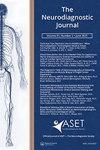ASET关于远程连续脑电图(cEEG)监测最佳实践的立场声明。
Q3 Health Professions
引用次数: 1
摘要
本文章由计算机程序翻译,如有差异,请以英文原文为准。
ASET Position Statement on the Best Practices in Remote Continuous EEG (cEEG) Monitoring.
The efficacy of continuous EEG (cEEG) monitoring of critically ill patients admitted to the intensive care unit (ICU) and patients admitted to the epilepsy monitoring unit (EMU) has been recognized by physicians, demonstrated by researchers, and described in the American Clinical Neurophysiology Society (ACNS), International League Against Epilepsy (ILAE), and International Federation of Clinical Neurophysiology (IFCN) guidelines (Claassen et al. 2013; Herman et al. 2015; Tatum et al. 2022). cEEG monitoring provides the ability to make real-time treatment decisions, improving patient safety and outcomes and reducing risk (Hill et al. 2019; Rosetti et al. 2020; Claassen et al. 2006; Friedman, Claassen, Hirsch 2009; Classen et al. 2013; Kubota et al. 2018). Qualified personnel must be available to recognize, document and communicate EEG changes and seizures in real time 24/7/ 365. Hospitals may be unable to provide continuous monitoring due to a lack of available onsite staffing, equipment, and other resources, so they often outsource cEEG monitoring services to a qualified and dependable remote service provider (RSP). Guidelines, policies, and procedures for on-site cEEG monitoring are currently available through the ACNS, ILAE, and IFCN (ACNS 2008; Tatum et al. 2022) and ASET (ASET 2011a, 2011b, 2016a), but there are unique aspects related to RSP services that require additional consideration. These unique challenges are addressed in this best practices position statement.
求助全文
通过发布文献求助,成功后即可免费获取论文全文。
去求助
来源期刊

The Neurodiagnostic Journal
Health Professions-Medical Laboratory Technology
CiteScore
1.00
自引率
0.00%
发文量
26
期刊介绍:
The Neurodiagnostic Journal is the official journal of ASET - The Neurodiagnostic Society. It serves as an educational resource for Neurodiagnostic professionals, a vehicle for introducing new techniques and innovative technologies in the field, patient safety and advocacy, and an avenue for sharing best practices within the Neurodiagnostic Technology profession. The journal features original articles about electroencephalography (EEG), evoked potentials (EP), intraoperative neuromonitoring (IONM), nerve conduction (NC), polysomnography (PSG), autonomic testing, and long-term monitoring (LTM) in the intensive care (ICU) and epilepsy monitoring units (EMU). Subject matter also includes education, training, lab management, legislative and licensure needs, guidelines for standards of care, and the impact of our profession in healthcare and society. The journal seeks to foster ideas, commentary, and news from technologists, physicians, clinicians, managers/leaders, and professional organizations, and to introduce trends and the latest developments in the field of neurodiagnostics. Media reviews, case studies, ASET Annual Conference proceedings, review articles, and quizzes for ASET-CEUs are also published in The Neurodiagnostic Journal.
 求助内容:
求助内容: 应助结果提醒方式:
应助结果提醒方式:


